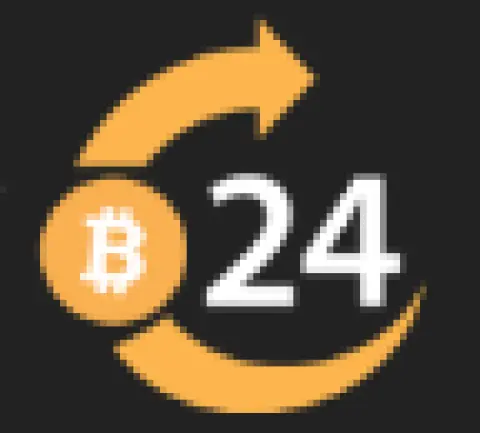Table of Contents:
Introduction to Contrarian Trading
The world of finance and investment is filled with different strategies, one of which is known as Contrarian Trading. This interesting and effective method of trading serves as a reflection of the old adage, "Buy when others are fearful, and be fearful when others are greedy."
Contrarian Trading refers to an investment style that goes against prevailing market trends by buying assets that are performing poorly and then selling when they perform well. Contrarian traders believe that people who say the market is going to go up are wrong and vice versa. The premise of this strategy is a belief that crowd behavior among investors can lead to mispricings in securities markets.
But how does it work exactly? And is it a viable strategy for everyone? This article will dive into the exciting world of Contrarian Trading, detailing the principles behind it and exploring the potential benefits and risks involved. Whether you're a seasoned investor or a beginner dipping your toes into the world of crypto and finance, this guide to Contrarian Trading Strategies will provide valuable insights to help you make informed investment decisions.
Understanding the Crowd Psychology
One of the fundamental aspects of Contrarian Trading is a deep understanding of crowd psychology. Without fully grasping this concept, it can be challenging to effectively implement Contrarian Trading Strategies. So, what exactly is crowd psychology?
Crowd psychology, also known as herd behavior, refers to the inclination for individuals to follow a large group. This behavior typically occurs when the group is acting seemingly irrationally like in market bubbles or stock market panics. People in a crowd can act very differently than as individuals. They tend to make decisions based on emotions rather than rational thought, especially in cases of high market volatility.
In terms of investing, the crowd typically refers to the majority of market participants who are buying or selling a specific asset. Contrarian traders, on the other hand, believe that the crowd often gets it wrong - allowing them to profit from these misjudgments. By going against the crowd, Contrarian investors attempt to capitalize on fluctuations in price caused by collective emotional reactions.
To be a successful Contrarian trader, you must be able to identify these popular sentiment extremes and then take a position contrary to the crowd. But remember, it’s not just about going against the crowd every time; it’s about understanding when the crowd’s decision is based on emotions and not rationality.
Pros and Cons of Contrarian Trading Influenced by Crowd Psychology
| Pros | Cons |
|---|---|
| Opportunity for high rewards if trends reverse | Can result in significant losses if trends don't reverse |
| Less competition as fewer traders adopt this strategy | Requires a deep understanding of market psychology |
| Can potentially profit from market overreactions | Market trends can continue for longer than expected |
| May expose undervalued investment opportunities | Requires patience and discipline, as returns might take time |
Essentials of Contrarian Trading Strategies

Contrarian Trading Strategies are more than just doing the opposite of what the majority of investors are doing. It requires critical analysis, deep understanding and interpretation of market trends, and a certain degree of courage and conviction. Let's delve into the key principles of these strategies.
The first principle of Contrarian Trading is the establishment of a benchmark. This doesn't necessarily have to be a financial index but could also be a widely followed price or trend. Successful Contrarian traders are not just reactive; they are proactive in anticipating potential market shifts.
Secondly, Contrarian traders are not swayed by the dire predictions or optimistic forecasts of others. They base their decisions on their own thorough research and careful analysis of a specific asset or market condition. This independence is crucial to the practice of Contrarian Trading.
Thirdly, true Contrarian investors also demonstrate a high degree of patience and discipline. They do not expect immediate gains and are willing to endure potential short-term losses. Contrarian Trading is a long-term strategy, catering more to investors who are capable of committing for extended periods.
Lastly, successful Contrarian traders display an inherent ability to handle risk effectively. The nature of Contrarian Trading is risky as it involves going against popular sentiment. Hence, a successful Contrarian trader knows how to manage their investments wisely and mitigate potential losses.
Benefits and Risks of Contrarian Trading
Understanding the benefits and risks of Contrarian Trading is essential to making the most out of this investment strategy. In essence, approaching the market as a contrarian can lead to significant advantages and rewards, but it's not without pitfalls and challenges.
Benefits of Contrarian Trading:
Profit from market inefficiencies: One of the main benefits of Contrarian Trading is the potential to profit from market inefficiencies caused by herd behaviour. When investors are driven by panic or greed, they can push the price of an asset above or below its intrinsic value. This variance creates an opportunity for contrarian traders to buy low and sell high.
Lower competition: As a contrarian, you're not competing with the majority of traders. This means there's less 'noise' to contend with in your analysis. You can spend more time focusing on your own research and analysis rather than trying to guess what other traders are thinking or doing.
Risks of Contrarian Trading:
Timing the market: One of the major risks in Contrarian Trading is the difficulty in correctly timing the market. It's challenging to pinpoint the exact moment when the market sentiment will shift, making it possible to buy too early or sell too late, leading to potential losses.
Emotional resilience: Contrarian Trading often requires going against conventional wisdom and popular opinion, which can lead to stress and emotional discomfort. This requires a higher degree of emotional resilience from traders who choose this path.
Despite the potential risks involved, Contrarian Trading can provide substantial returns for those who understand its principles and can effectively manage the associated challenges. As with any investment strategy, it's essential to always conduct thorough research, maintain discipline, and manage your risk levels effectively.
Practical Examples of Contrarian Trading

Let's put the theory of contrarian trading into a real-world context. Here are some well-known examples of contrarian trading strategies applied.
The Dot-Com Bubble: In the late 90s, tech stocks were booming, and investors were buying into tech companies at an incredibly rapid pace, regardless of whether these companies were profitable or not. Many contrarian traders recognized this as a speculative bubble and opted to sell their tech stocks despite the hype. When the bubble burst in 2000, these contrarian traders profited from the market's downturn.
The Housing Market Crash of 2008: Before 2008, the real estate market was seen as a safe bet with skyrocketing prices and an influx of investors. Contrarian traders, however, noted the high-risk subprime mortgages and overvaluation in the housing sector. They bet against the crowd, often shorting property stocks and other related assets. When the market collapsed, they were able to profit from the dramatic drop in prices.
Bitcoin in 2017: The cryptocurrency market saw a massive surge in popularity and prices in 2017. Bitcoin soared to nearly $20,000 by the end of the year, driven by a flood of new investors. Contrarian traders who believed that Bitcoin was over-hyped and overvalued, positioned themselves accordingly. When the price of Bitcoin plummeted through the following year, these contrarian traders stood to gain.
These examples illustrate the opportunities that can be seized by contrarian traders. They also highlight the importance of solid research and clear judgement - contrarian trading is not about blindly taking a counter-position but about critically analyzing the market and making informed decisions.
Mastering the Emotional Aspect
It's essential to understand that successful Contrarian Trading is not just about spotting market irregularities and trends—it also fundamentally hinges on mastering one's emotions and maintaining a level-headed approach. Fears and greed drive the general market mood, causing irrational decisions. Contrarian traders, however, pride themselves on being able to detach from this emotional clamor.
Keeping emotions in check means resisting the impulse to follow the crowd blindly. It involves diligent research and objective analysis to discern if current market trends are based on solid facts or mere hype. It's about having the courage to take a long position when everyone else is selling and the resilience to hold onto your beliefs, even when the market seems to prove you wrong.
Clarity of mind and emotional discipline are crucial in Contrarian Trading Strategies. Panic and euphoria are powerful forces that can cloud judgment. By staying composed, Contrarian traders can see the real market value that others might miss in the heat of the moment.
Conclusion: Is Contrarian Trading for You?

In conclusion, Contrarian Trading is a thought-provoking and potentially rewarding investment strategy. It involves taking a position that is in direct opposition to the prevailing sentiment of the crowd. While it comes with its unique set of challenges and risks, it also offers the opportunity to profit from market inefficiencies and herd behaviour.
However, Contrarian Trading requires a deep understanding of crowd psychology, a keen eye for market trends, and the patience and discipline to endure potential short-term losses. It's not a strategy for everyone, especially if you are not comfortable with going against the crowd or taking on higher risk.
Nevertheless, whether you decide to adopt Contrarian Trading Strategies or not, gaining a strong understanding of different investment approaches and strategies is always beneficial for your future financial decisions. After all, the world of finance and crypto is rich with opportunities. Embrace the knowledge, hone your skills, and never stop exploring new strategies and trends. Happy trading!
Experiences and Opinions
Nutzer berichten oft von den Herausforderungen beim Einstieg in contrarian trading. Viele fühlen sich anfangs überfordert. Der Schlüssel: Geduld und Disziplin sind unerlässlich. Käufer tendieren dazu, in Zeiten der Angst zuzuschlagen. Diese Strategie erfordert jedoch eine solide Marktanalyse.
Ein häufiges Problem: Emotionen beeinflussen Entscheidungen. Nutzer berichten von impulsiven Käufen, wenn der Markt fällt. Diese Käufe sind oft nicht gut durchdacht. Erfolgreiche Anwender empfehlen, eine klare Strategie zu verfolgen. Sie betonen die Notwendigkeit, sich von der Herde abzugrenzen.
In Foren diskutieren Nutzer über die Bedeutung von Marktpsychologie. Ein typisches Beispiel: Während der COVID-19-Pandemie fanden viele Anleger große Chancen. Der Markt war überverkauft, und contrarian trader erkannten dies. Laut einer Quelle können diese Anleger von den Ängsten anderer profitieren.
Ein weiterer Aspekt ist das Risikomanagement. Anwender betonen oft, dass es wichtig ist, nicht alles auf eine Karte zu setzen. Diversifikation bleibt ein zentraler Punkt. Nutzer empfehlen, in verschiedene Sektoren zu investieren. Dies verringert das Risiko und stabilisiert die Renditen.
Die Strategien von bekannten Tradern wie Paul Tudor Jones werden ebenfalls oft zitiert. Seine Erfolge basieren auf einer tiefen Marktanalyse und dem Verständnis globaler Trends. Nutzer betonen, dass es wichtig ist, sich nicht von kurzfristigen Bewegungen leiten zu lassen. Langfristige Perspektiven helfen, bessere Entscheidungen zu treffen. Mehr Informationen über seine Ansätze sind in einem Artikel zu finden.
Ein weiteres Thema ist die Anwendung von Kennzahlen. Nutzer berichten, dass sie oft auf niedrig bewertete Aktien setzen. Ein Beispiel: Aktien mit niedrigem Kurs-Gewinn-Verhältnis (KGV) bieten oft Potenzial. Anwender betonen, dass diese Kennzahlen jedoch nicht allein ausschlaggebend sein sollten. Es ist wichtig, die gesamte Marktlage zu berücksichtigen.
Abschließend bleibt festzuhalten, dass contrarian trading eine anspruchsvolle, aber potenziell lukrative Strategie ist. Nutzer, die sich auf die Grundlagen konzentrieren, berichten von positiven Ergebnissen. Kritiker warnen jedoch vor den emotionalen Fallstricken. Ein ausgewogenes Verhältnis zwischen Risiko und Rendite ist entscheidend. Erfahrungsberichte zeigen, dass Geduld und strategisches Denken der Schlüssel zum Erfolg sind. Mehr über bewährte Ansätze gibt es in der Buchbesprechung von David Dreman.
Key Insights on Contrarian Trading
What is contrarian trading?
Contrarian trading is an investment style that goes against prevailing market trends by buying assets that are performing poorly and then selling when they perform well.
How does contrarian trading relate to crowd psychology?
Contrarian traders thrive on the herd instincts of investors. They tend to buy when others are selling and sell when others are buying. They profit from the overreactions and panic amongst the crowd of investors.
What are the risks of contrarian trading?
Contrarian trading involves significant risk, primarily because it goes against the grain of dominant market sentiments. If the broader market sentiment continues in the same direction, contrarian traders can lose money.
How to become a successful contrarian trader?
Successful contrarian traders usually combine technical analysis, fundamental analysis, and a deep understanding of market psychology. Additionally, patience and discipline are two crucial attributes they must possess.
Does contrarian trading work for all asset classes?
While contrarian trading can technically be applied to any asset class, it is most commonly applied to stocks. Traders could potentially apply it to commodities, forex, and other asset classes as well.











